Sanqingshan Scenic Area
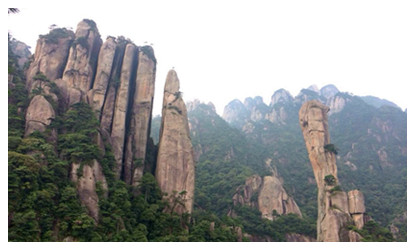 |
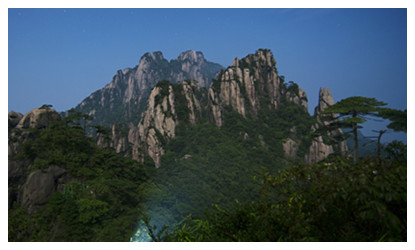 |
Sanqingshan Mountain is 144 km east of Quzhou City of Zhejiang Province, 78km west of Shangrao City of Jiangxi Province,115km south of Wuyishan City of Fujian Province and 263km north of Huangshan City of Anhui Province.
What to see?
Sanqingshan Scenic Area covers an area of 220 square km, of which 71 square km is the main scenic area. The granite landforms are the most valued component of Sanqingshan landscape. Mountain Sanqingshan has plentiful granite morphological landscape resource, picturesque meteorological landscape resource, ecological landscape resources, rare plant and animal resources as well as landscape resources of lakes and waterfalls and Taoism culture.
Unique Natural Stone Peaks
Visitors can see the pictographic stone landscape here, lifelike natural sculptures, such as the Oriental Goddess, Gigantic Boa, Colorful Screen at Ninth Heaven, Thousands of Peaks Competing for the Best, Three Dragons Rushing to Sea and Guanyin (Goddess of Mercy) Enjoys Music.
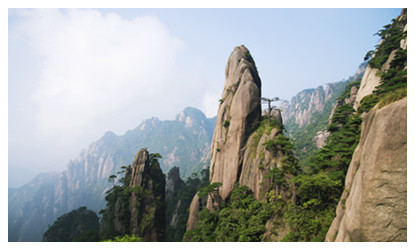 |
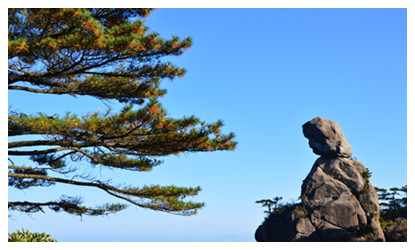 |
Three peaks Yujing, Yuxu, Yuhua looks like three divine spirits Yuqing, Shangqing and Taiqing of Taoism resting in a row, hence the name Mountain Sanqingshan. It combines the beauty of Huangshan Mountain, the spectacular of E'mei Mountain, the nimbus of Lushan Mountain and the steepness of Huashan Mountain in one, thereafter displaying a unique quality.
The main peak is Yujing Peak with 1819.9 meters above sea level, and it is a good place to watch sunrise and sunset.
Special meteorological phenomena
Visitors may also enjoy various special meteorological phenomena, of which the most important ones are: Cloud Sea, Cloud Waterfall, Sanqing Divine Light, Five Colors Road in the Clouds, and Meteor Showers. During winter, you can experience another landscape type, mountain blanketed in snow. Mountain Sanqingshan has been an important spiritual center for Taoism, an ancient religious culture unique to China. The historic Taoist stone structures, such as Sanqing Temple, Dragon and Tiger Palace and Wind and Storm Pagoda remain important relics of the Taoism culture.
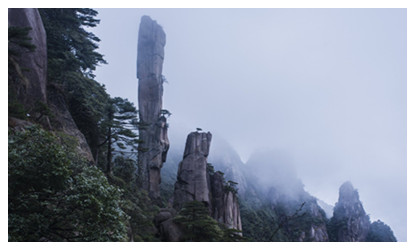 |
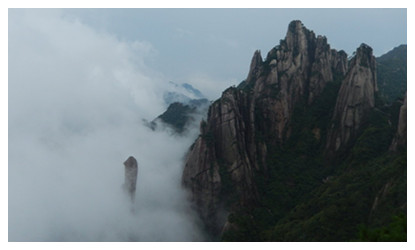 |
Sanqing Taoist Palace
Sanqing Palace is located in the northern part of the Sanqing Mountain. It can be described as the "open-air museum" of the ancient Taoist architectural complex, as well as a gathering place for cultural landscapes.
Sanqing Palace has a history of more than 1,600 years, and it has more than 230 ancient buildings and cultural relics such as palace, temple, spring, pond, and tower. They are based on the ingenious "Gossiping Diagrams" layout, which is a valuable place to study the design and layout of ancient Taoist architecture in China. Visiting Sanqing Palace, you can appreciate the long history of Taoism culture.
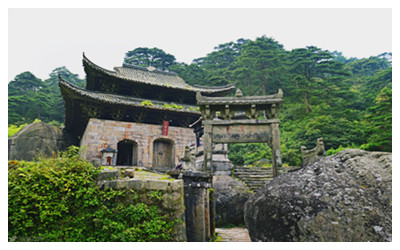 |
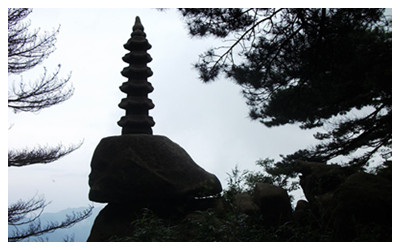 |
Wild animals and plants
Mountain Sanqingshan boasts a particular high biodiversity. There are 2,373 species of higher plant, 1,728 species of wild animals, forming the most diversified ecological environment in East Asia. In addition, 144 species of animal and plant are listed in the China Species Red List, and 79 species are designated as National Key Protection wild animals and plants in China.
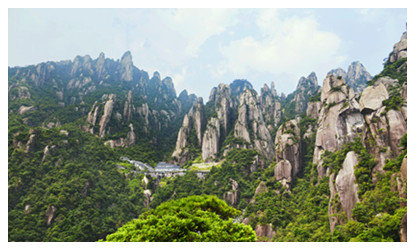 |
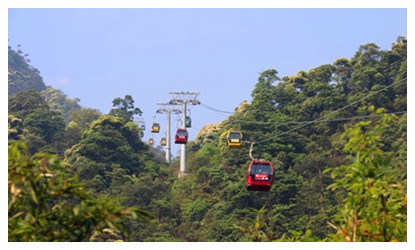 |
Mountain Sanqingshan presents a stunning array of natural beauty combining primeval landscapes and pristine flora. Few, if any, other world sites can rival it in terms of grandeur and majesty of Mother Nature. Come and visit, you will find it a special and beautiful place, not only for China, but also to the world.
How to travel ?
Travel Tips
Add: Sanqing township, Yushan County, Shangrao City, Jiangxi Province
Entrance Fee: CNY 245 including the round trip cable cars
Opening Hours: 08:00-18:00







 Ask Questions ?
Ask Questions ?